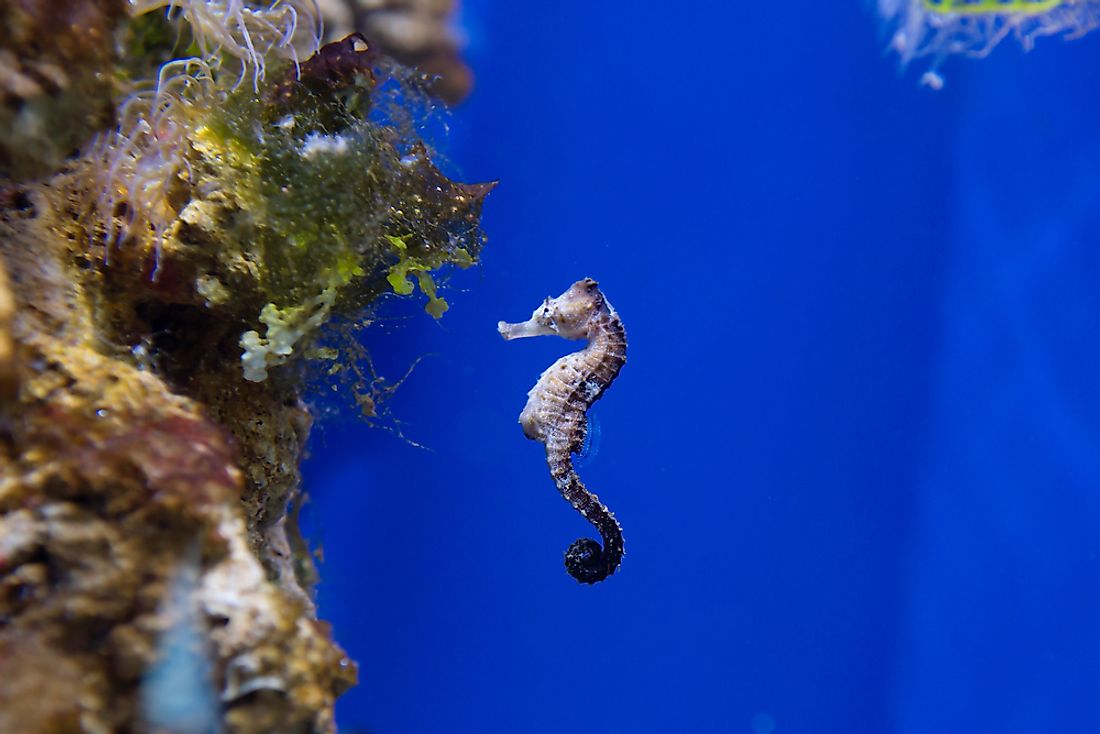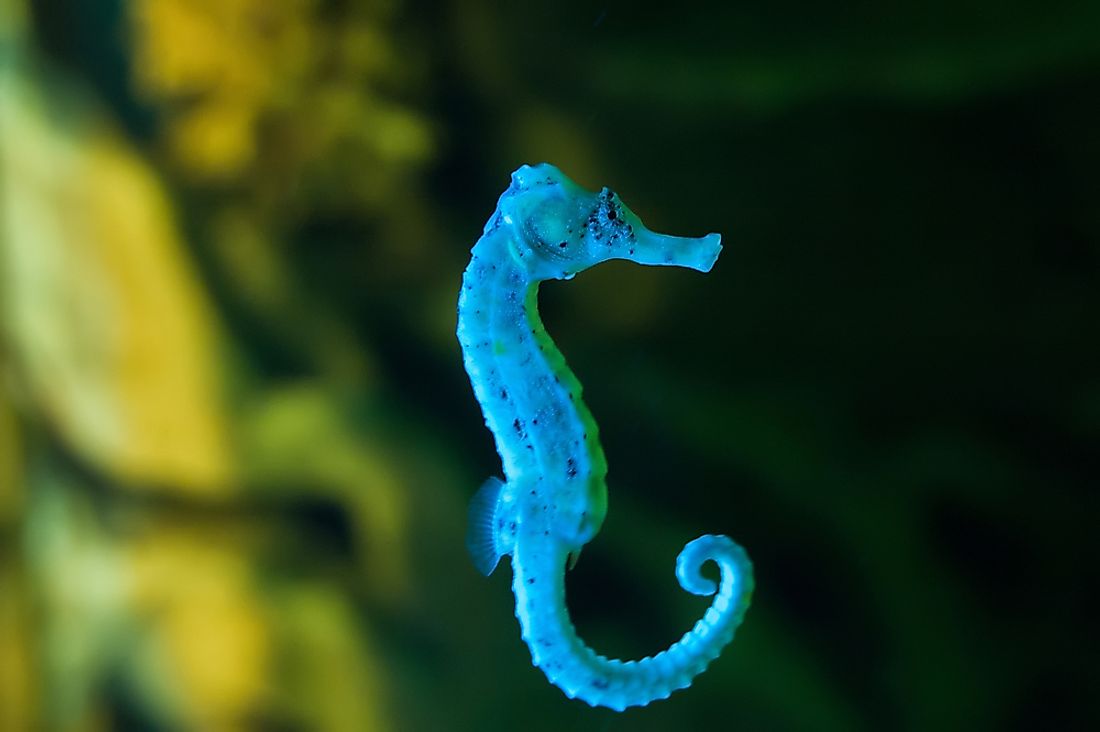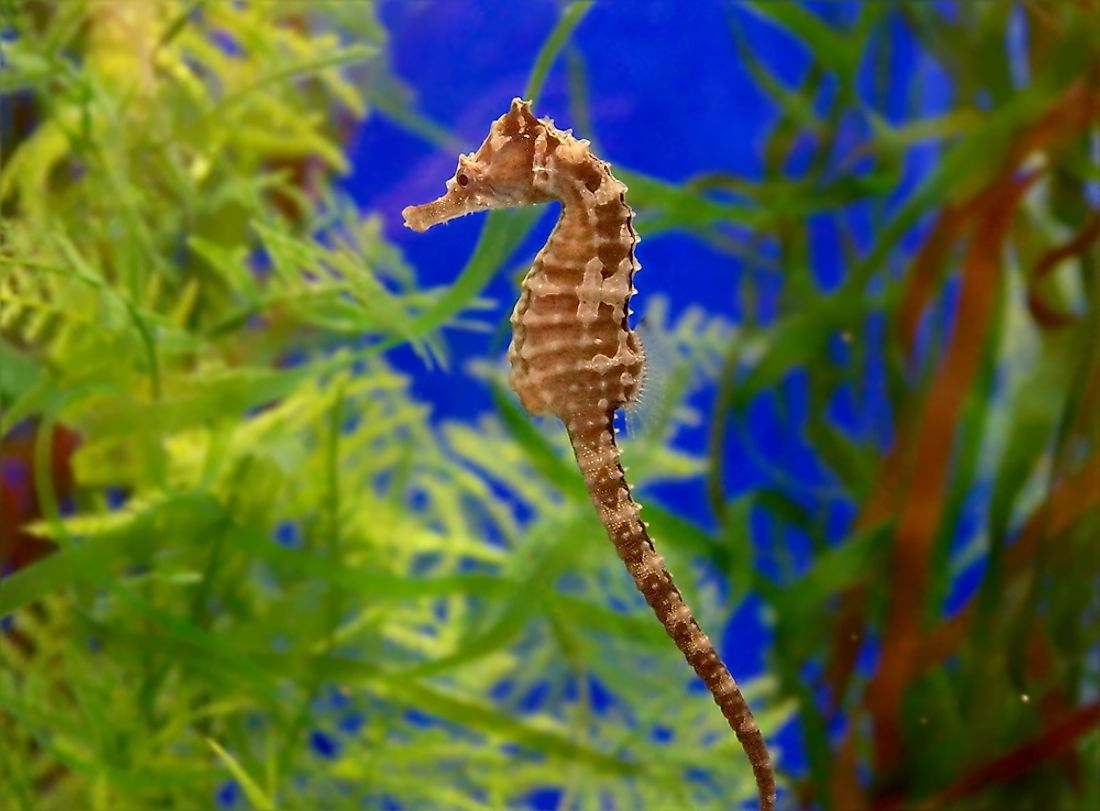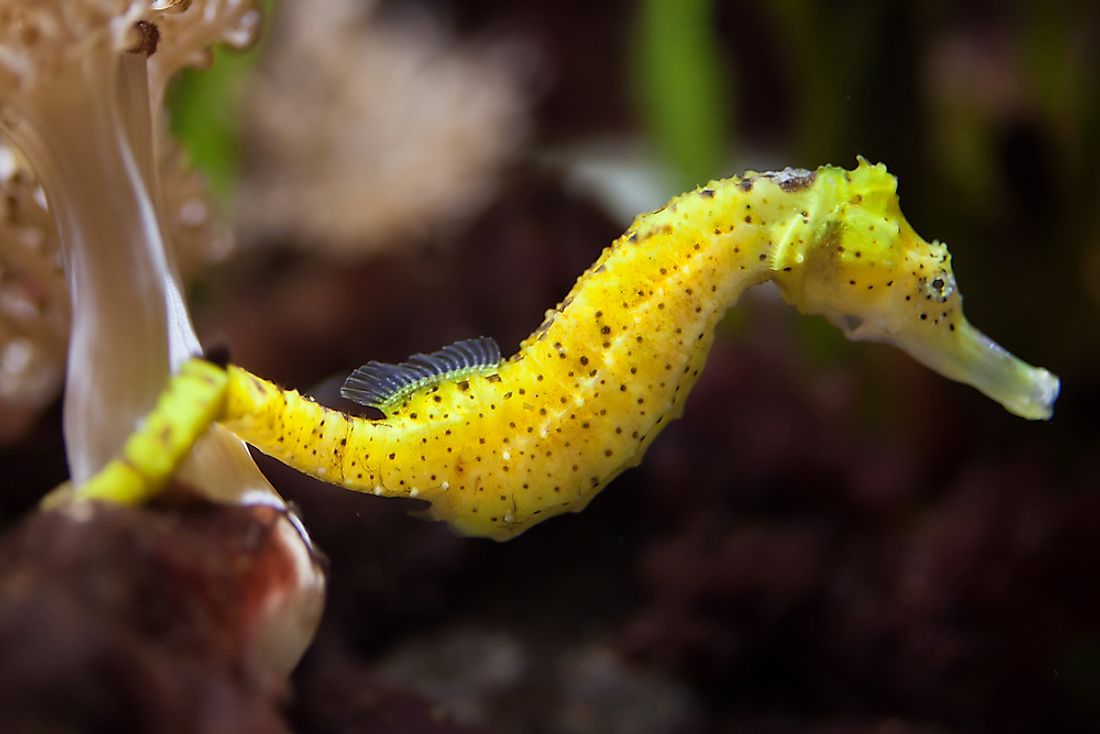Seahorse Facts - Animals of the Ocean

Seahorses are small marine fishes from the family Syngnathidae and genus Hippocampus. Its genus name is derived from an ancient word hippos (meaning horse) and kampos (meaning sea monster). There are 54 different species and several other sub-species of seahorses named after their resemblance to a horse. The members of the various species are, on most occasions, hard to differentiate. Due to a lack of evidence, little information is available about the reproductive rates, population, and conservation status of these marine animals. However, judging from the ever changing climate, there is a higher possibility that their population has reduced due to the decrease in viable habitats such as the estuaries, coral reefs, and seagrass beds. Millions of seahorses are killed annually for the traditional medicine trade. Another significant threat is the fishing of millions of seahorses alongside the starfish which are dried and sold as souvenirs to tourists and explorers.
4. Physical Description

Seahorses have an equine appearance with long-snouted heads and bent necks. These bony fish lack scales but have a thin skin layer stretching over a series of bony plates. These bony plates are arranged in rings throughout the animal's body. They also exhibit the unique trait of swimming upright and use their dorsal and pectoral fins to maneuver themselves in the water. The seahorses also lack a caudal fin unlike most other fishes. They have a highly prehensile tail which is used in extreme conditions. They are poor swimmers and one of the slowest swimming fish in the world. They often use their prehensile tail to wind it around an object to rest while swimming. The fish also have the ability to grow spiny appendages and reabsorb them to camouflage themselves as and when conditions demand.
3. Habitat and Range

Seahorses are mainly found in sheltered areas such as seagrass beds, mangroves and estuaries in shallow tropical and temperate waters throughout the world, from about 45°S to 45°N. Four species have been recorded in Pacific waters from North America to South America. Females occupy a bigger habitat than the males for instance males stay within an 11 square feet of habitat while females roam over large areas, hundred times this size.
2. Behavior
During mating, the male seahorse uses its central, front-facing pouch on the side of the tail to hold over 1500 eggs deposited by the female. The male carries the eggs for a period of 9 to 45 days. Once the young seahorses mature, they are released into the water and left to fend for themselves. Before breeding, the seahorses court for several days which is believed to coordinate the animals’ movements and reproductive states so that the male is ready to accept the eggs when the female is ready to deliver them.
Gestation period in seahorses range from two to four weeks and in this period, the fertilized eggs are surrounded by a spongy tissue in the pouch of the male seahorse and is provided with oxygen. Important nutrients such as the energy-rich lipids, prolactin as well as calcium are supplied to the eggs by the male seahorse. These nutrients help in osmoregulation, gas exchange, waste transport, and immunological protection. The seahorse hatches where the salinity of water is regulated. Seahorses do not take care of the young ones after birth. Therefore, they are susceptible to a variety of predators and strong waves. Only a minimum percentage survive to adulthood.
1. Diet

The seahorses use excellent camouflage and patience as tools to ambush prey that approach them. Mysid shrimps, larval fish, small crustaceans, and other invertebrates constitute the prey of these marine fishes. During feeding, they produce a distinctive click each time a food item is ingested. Similar sounds can also be heard during social interactions











